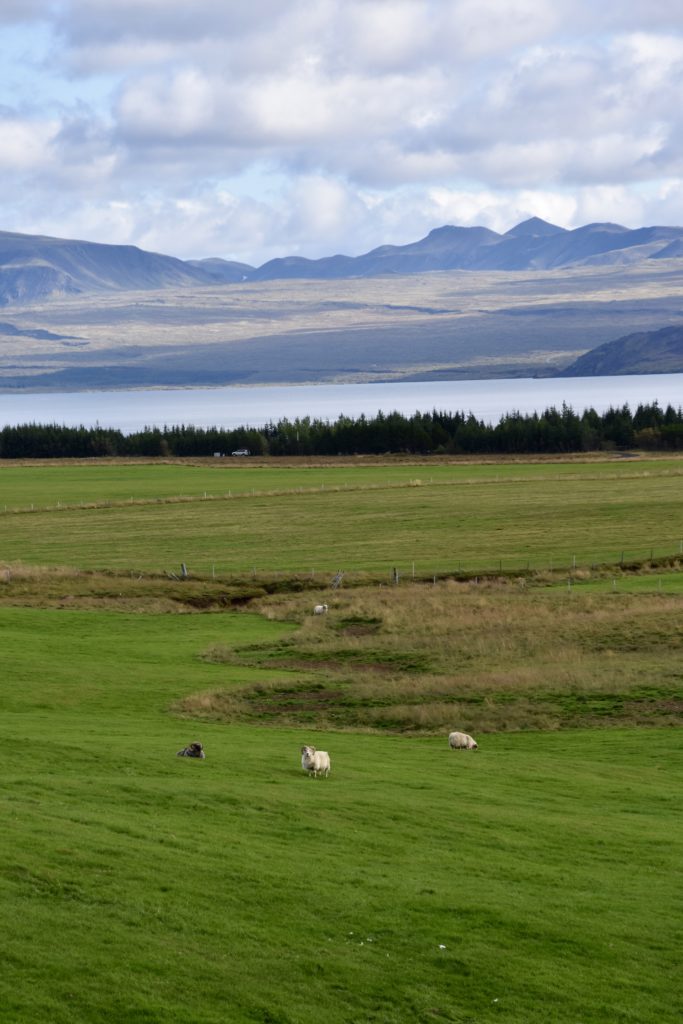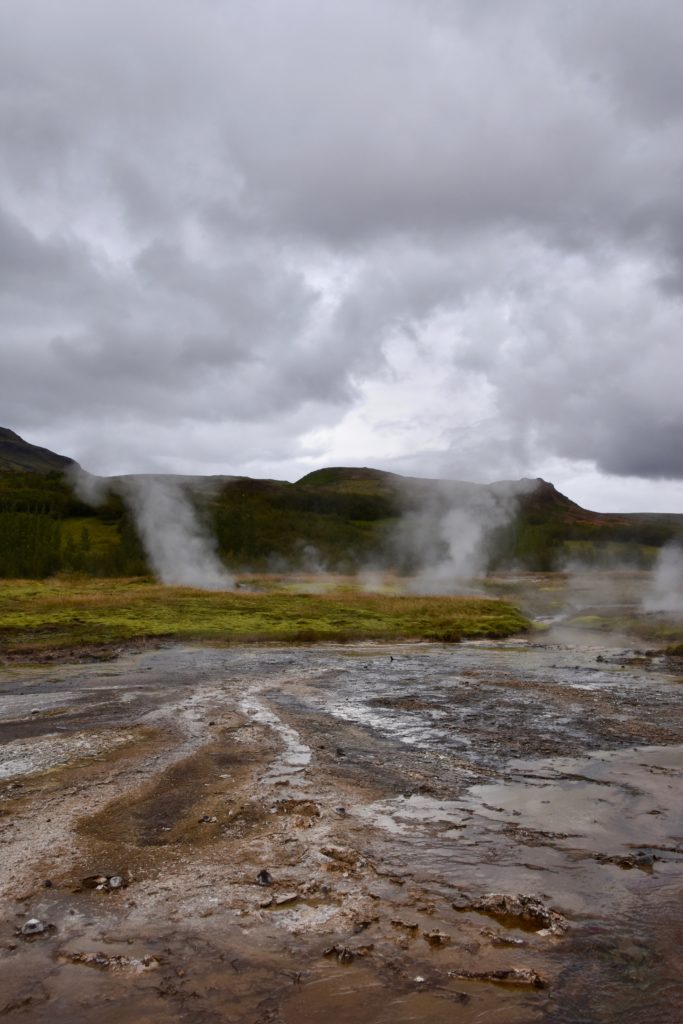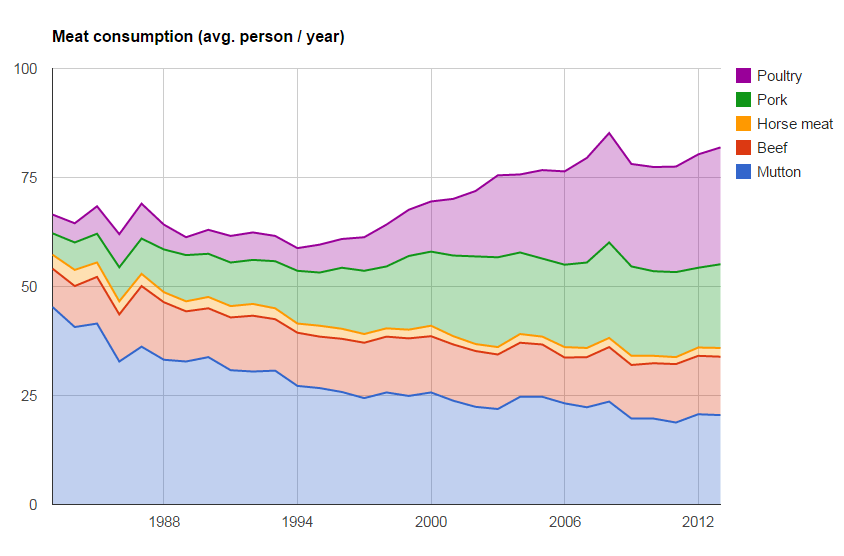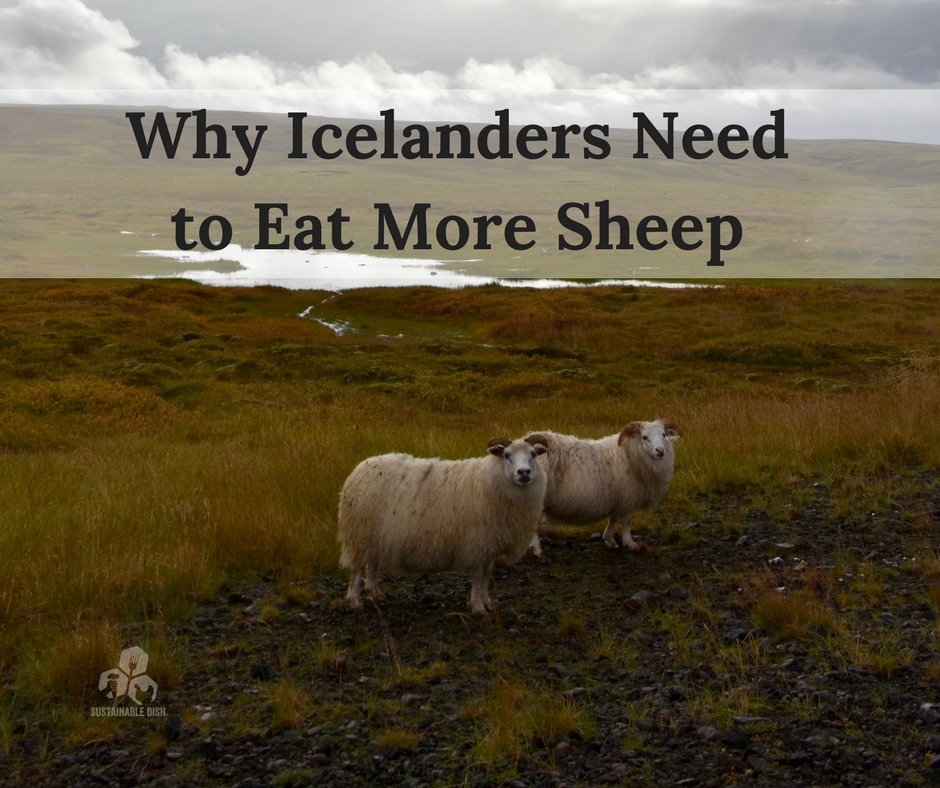 Back in September, I had the honor of presenting at the Icelandic Health Symposium along with some brilliant folks like Dr. Rangan Chatterjee, Dr. Bryan Walsh, Dr. Satchindanada Panda, Dr. Lilja Kjalarsdottir, Dr. Tommy Wood, Dr. Doug McGuff and Ben Greenfield. The theme was longevity. We heard a lot about how diet, food timing, sleep, movement, stress and social factors play into lifespan. My question was…
Back in September, I had the honor of presenting at the Icelandic Health Symposium along with some brilliant folks like Dr. Rangan Chatterjee, Dr. Bryan Walsh, Dr. Satchindanada Panda, Dr. Lilja Kjalarsdottir, Dr. Tommy Wood, Dr. Doug McGuff and Ben Greenfield. The theme was longevity. We heard a lot about how diet, food timing, sleep, movement, stress and social factors play into lifespan. My question was…
[Tweet “If we’re going to live forever, how are we going to produce our food?”]
I was fortunate enough to be able to spend a few days touring Iceland with my husband before the conference started. What I saw was pretty much a moonscape with a whole lot of sheep and horses, very few trees and almost no soil. The Vikings removed all the trees when they arrived in the late 9th century.

There are about 800,000 sheep in Iceland and only about 323,000 Icelanders. The sheep seemed to thrive on the patchy landscape, but because they have lost their flocking instincts (no predators on the island) the animals really spread out. Farmers allow their sheep to graze highland areas in the summer and round them up to bring indoors for the winter. This is not really ideal for the land or the sheep. Because they have unlimited access to any patch of grass they wish, the animals are able to overgraze some areas and any parasite load is easily transferred to other sheep. The pasture is not given a long enough rest period before another animal comes along to graze.

I didn’t see any examples of intensive grazing practices, meaning the farmers use electric fencing to force the sheep to graze only smaller portions of pasture at a time, then allowing a longer rest period, typical in the Savory Institute’s “Holistic Management” technique.
Icelanders are eating much less lamb these days. In 1983, lamb (also called “mutton”) was 70% of their meat intake. Today, chicken and pork are more popular than lamb. In 1983, Icelanders at 4.3kg of chicken per year. In 2013, that number went up to a whopping 27kg of chicken per year!

Some have listed the Icelandic diet as the best, even though their intake of fruit and vegetables is quite low. Although Iceland ranks among the longest lived populations in the world, I’m concerned their shift from red meat and fish to pork, chicken, and processed foods will be their downfall from a nutrition, environmental, economic and cultural standpoint. The Icelandic farmed fish industry is also rapidly expanding, with numerous issues arrising.
Today, Icelandic children rank second only to Greece for the most obese in Europe. In the overall population, 61.7% of Icelanders are obese, up from 12.2% in 1990. This is worse than America with an obesity rate of 66.3%. Their current government dietary recommendations include foods like low fat dairy, grains twice a day, and limited meat consumption – a far cry from their traditional foods rich in red meat, fatty fish, butter, cheese and other full-fat fermented dairy.
Irrational nutrition fear of red meat (thanks in a large part to the media and US dietary guidelines) plus the influx of cheap grain-fed, factory farmed chicken and pork are partially to blame for the lower interest in lamb. Food is insanely expensive there. Lunch was easily $100 each day. I found a simple burger was about $25 – $40 in US dollars. Restrictions prevent farmers from selling their meat directly to consumers, making meat prices artificially higher than they need to be. Chicken is a much less expensive protein source than Icelandic lamb.
In addition, the rising value of their currency and trade restrictions with Russia mean less of a market for Iceland’s lamb exports. The government subsidizes more than 40% of the income of sheep farmers. Meanwhile, the number of sheep farms in Iceland has declined from 3,286 in 1993, to 2,785 in 2008. One sheep farmer we met with said the current government is looking to reduce the total number of farms by about 30%, in order to keep the others in business.
[Tweet “Why Icelanders Need to Eat More Sheep”]
Nutrition. Grass-fed lamb has a better than 1:2 ratio of omega 3’s to 6’s, where roasted chicken has a ratio of 1:8. It’s also has twice the iron, 3x zinc, and a 3oz portion of lamb contains 2.2 mcg of B12 compared to chicken which has only 0.3. Lamb is simply superior to chicken, nutritionally speaking. Also, for those looking to cause “least harm,” one lamb can produce a lot more meat than a chicken, and an animal raised outdoors on pasture has a much better life than one raised on 100% grain indoors under artificial lighting for it’s entire life.
Environment. Sheep thrive on Iceland’s pastures and chickens do not. Grain also doesn’t grow well on Iceland’s poor soils. If we remove more sheep from the land, what will happen to the soil? Other than horses and a handful of goats, there really aren’t any ruminants on Iceland. Their grazing stimulates pastures to grow and sheep manure is a natural fertilizer. On a land with limited soil quality, more grazing animals – not less – is the way to go, as long as they’re managed well. Chicken is doing nothing for Iceland’s environment.
Economic. There are serious implications if Iceland loses its small-scale farming economy. Most of their rural communities rely on sheep farming to survive. Reduce the number of sheep farms and those families are not likely to stay in the small towns. Additionally, I feel pretty strongly that countries should be able to produce as much of their own food as possible. What happens when their currency fails and they can’t afford to import their food? Not too long ago, Iceland suffered a major economic crisis. When a country doesn’t know how to produce it’s own food and relies on imports, an incredibly unstable situation can unfold. We’re seeing this play out in Venezuela right now.
Icelanders, you have a beautiful country. You’ve enjoyed great health and longevity from a diet high in animal foods grown on your island and harvested from the sea, but you’re getting sicker, and you’ll lose your farmland and communities if you continue to eat like us Americans. You should be producing more of your own food (using intensive grazing practices), value your farmers and your sheep more than you do. Consider going back to your traditional diet. Please eat more lamb: for your health, for your environment, to sustain your farming communities, and for your resilience.









7 thoughts on “Why Icelanders Need to Eat More Sheep”
That was such a good article you wrote. I hope all Icelanders read it and follow your advice!!
Thanks!
Lamb is NOT mutton. Mutton is an older sheep and is YUCK !! Tougher and not as delicately tasty. I think you can compare young chicken to lamb and mutton to an older soup chicken. There are a few ways to prepare mutton so that it is edible, just like the old soup chickens were cooked. It is a insult to lambs everywhere to be called mutton. Sorry to be complaining, but there are so many who wont eat lamb because they had mutton first and were told that it was lamb. Nasty ! Otherwise a nice article.
I understand the difference, however when you look at the chart I include, they don’t have a section for “lamb” so I wanted to let people know that mutton is meat from a sheep, like lamb is, just in case they didn’t know the difference. I eat mutton all the time and LOVE it. Clearly you’ve had some bad experiences. Have a great day.
Mutton gets a bad rap because most Americans have only had mutton from Suffolk and other traditional meat sheep. As mentioned, lamb is a milder meat but mutton from sheep older than a year can be mild and delicious too. Grass-fed Icelandic sheep have a tender, mild meat beyond that 12 month date as do Katahdin and Dorper sheep. (I know because we raise Icelandic and Katahdin sheep. We never castrate our rams and they are yummy on the dinner table. The traditional Suffolk types are only popular because they are better for commercial production; they are far from the best sheep meat, in my humble opinion.
Thank you for your article wich is for the most part correct. Still the number of sheep in Iceland was 473.144 in 2016 but not 800.000 as you can read on the http://www.statice.is (the icelandic government institution that handles and publishes statistics). Also I do not share your view regarding the summertime grasing of the sheep. I consider it to be far better than in many other countries that have limited land for grasing and therefore have to move the animals from time to time between pastures. Here our sheep can go where they want to graze (still with some limitations) and there little risk of parasites involved (until they get home to the farms and stay in smaller areas). Also it would be absolutely impossible to put a lot more fences in the Icelandic wilderness. It would be way to costly and in many places just not possible because of the landscape and also the destructive power of the weather and snow during winter. I am afraid all the tourists would he surprised if Icelandic wilderness would be covered in endless fences. It is quite possible there are few places that need to be managed better regarding grazing of animals in Iceland, but it is all controlled by a government institution where needed.
All in all, I am very happy with your article. Thanks again Diana ????
Thanks for the information regarding the statistics. I got my information from this site: http://www.visir.is/g/2015150909307/tvofalt-fleira-fe-en-folk-a-islandi-
and is that number is also cited here
https://icelandunlimited.is/blog/icelandic-sheep/
However the numbers you cite could be correct. I’m not sure how either resource collects their information.
I highly encourage you to check out the research on intensive management or the work of The Savory Institute regarding grazing practices. If you allow animals to roam wherever, it’s not ideal. The animals and land are much healthier in these systems because they mimic natural herding movement. The land must have a chance to rest. I understand it’s more labor intensive however it’s not more expensive to use electric fencing in order to manage animals well, but it makes a big difference on soil and pasture health. I think if the tourists understood the importance of it and this allowed for MORE animals, intensive management could be a game changer for the Icelandic lamb industry.